
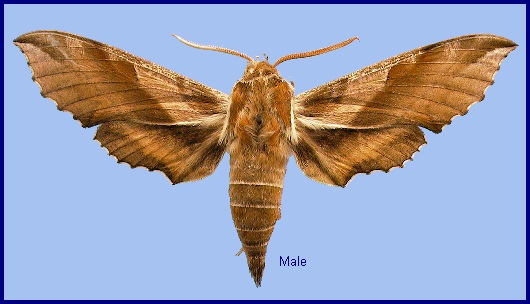
Smerinthus askoldensis Oberthür, 1879, Diagn. Lépid. Askold: 5. Type locality: [Russia, Primorskiy Krai,] Askold I[sland].
Synonym. Smerinthus askoldensis Oberthür, 1879.
Synonym. Cinogon cingulatum Butler, 1881.
[Further details on this species in Japan, as well as photos of many stages, can be found on Digital Moths of Japan.]
Wingspan: 51-59mm. Most similar to brown forms of Deilephila porcellus but outer margins of forewings more strongly dentate. Hindwing upperside with fringe dotted with brown on the veins. Head with a distinct pale lateral stripe, distinct on head and tegulae. with both outer and inner edges highlighted with pale scaling. Abdomen upperside with entire white fringes around the posterior margins of each tergite.
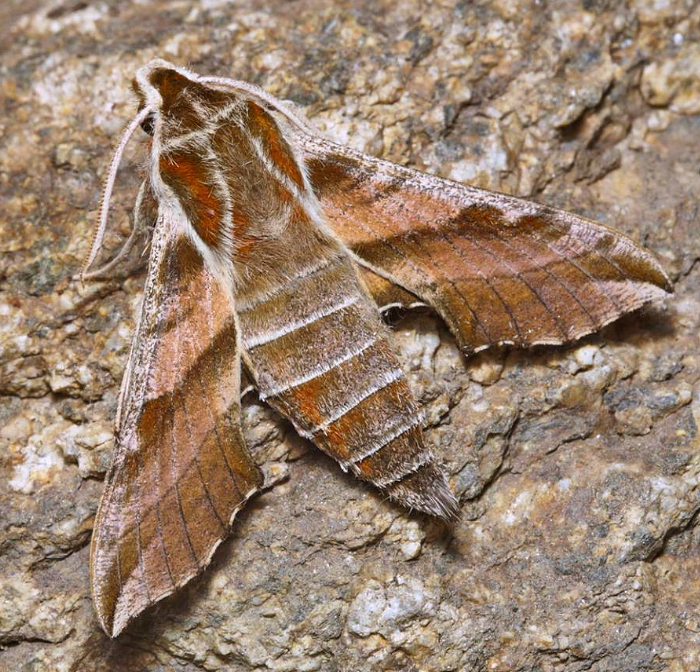
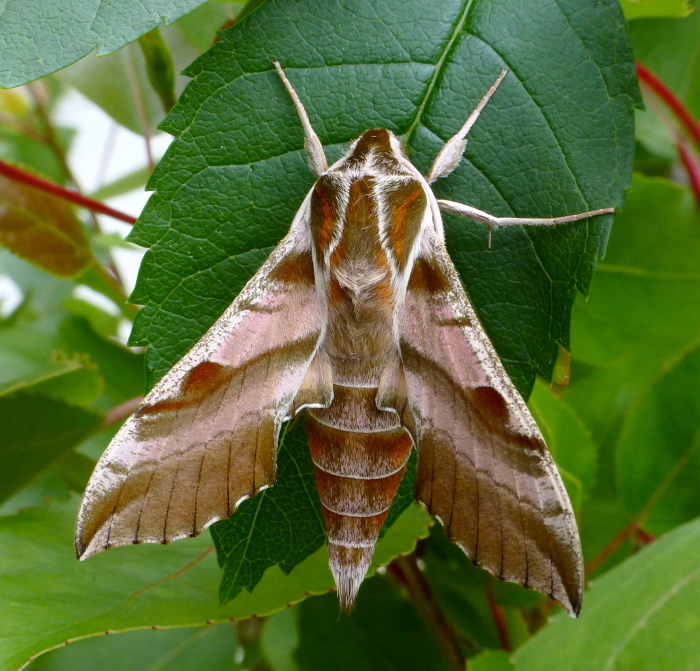
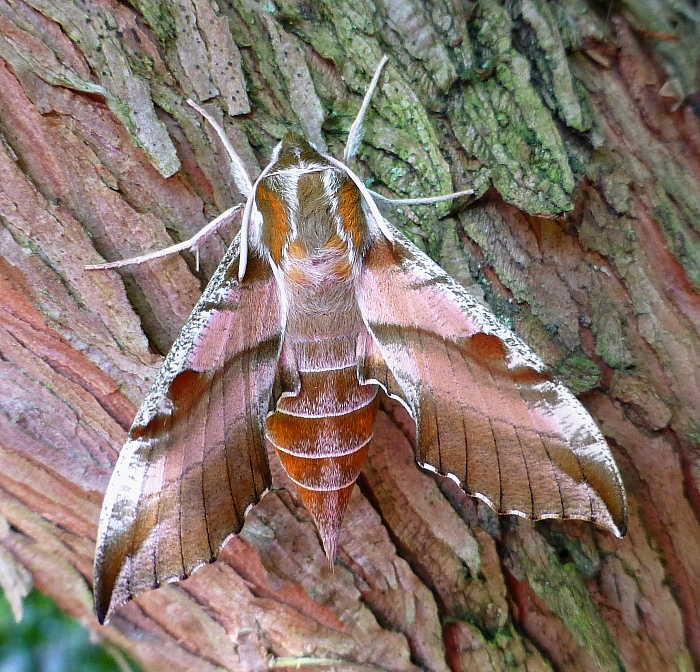
In the Russian Far East, a species of mixed and deciduous forests characterized by Quercus mongoliana (Izerskiy, 1999b). Females are active between 23.00h and 01.40h, males between 00.20h and 02.40h (Izerskiy, 1999b).
China: v (Hebei); vi (Nei Mongol); 16-25.vi (Jilin); vii (Heilongjiang; Beijing). Japan: 4.v (Kyushu); 6-24.vi (Hokkaido; Kyushu); 2.vii-11.viii (Hokkaido; Honshu). Russia: 3.vi-11.viii (Khabarovskiy Krai); 1.vi-29.viii (Primorskiy Krai); 9.vii (Kurile Islands).
In northern China there can be up to two generations per year, with adults flying between May and August (Yang, 1978); however, in many years there is only a single generation flying in June/July.
Park et al. (1999) give mid May until late September as the flight period in Korea.
OVUM: Clear pale jade green, changing to yellowish green before hatching. Oval (1.05 x 1.20mm), shiny and smooth, often with a dorsal depression.
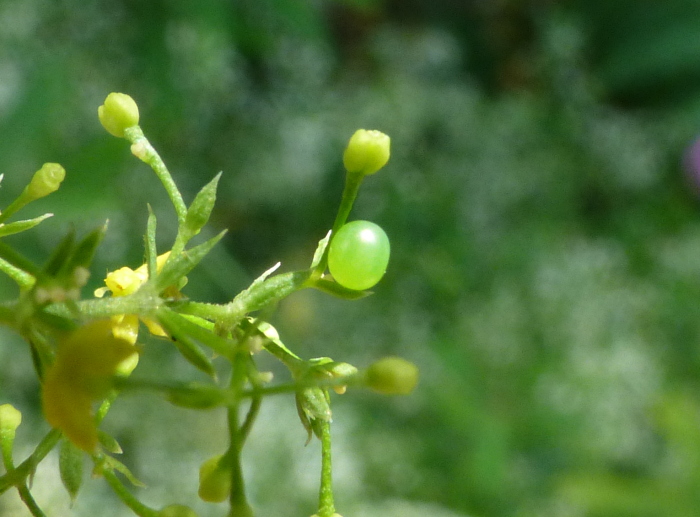
LARVA: Documented in detail from Japan by Nozaki & Miyata (1990). First instar 4mm, light yellow-green. Head round, of the same colour, but slightly wider than the width of the body. Horn small, near vertical, pale at first, darkening later. With feeding the body darkens (becomes less yellow) and a pale dorso-lateral line appears. Thereafter very similar to the early stages of Hippotion celerio until the final instar, when it becomes like Deilephila elpenor, but with the basic brown body colour broken up dorsally by pale transverse bands at the juncture of each segment. The small eye-spots on segments four and five continue on each subsequent segment as a dark spot. Horn on segment eleven short, 4mm in length, lower three-quarters dark, upper quarter white.
Very secretive. Small larvae tend to sit along the midrib underneath a leaflet. When larger, most rest (often head down) beneath a shoot stem when not feeding, where they are difficult to see. In the final instar the behaviour of the now dark larva changes completely. It hides by day deep down near the ground at the base of the hostplant, coming up to feed only during the hours of darkness.
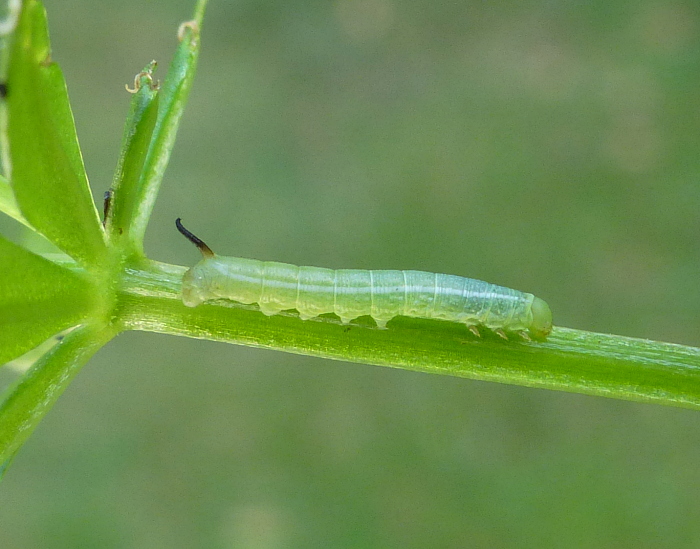
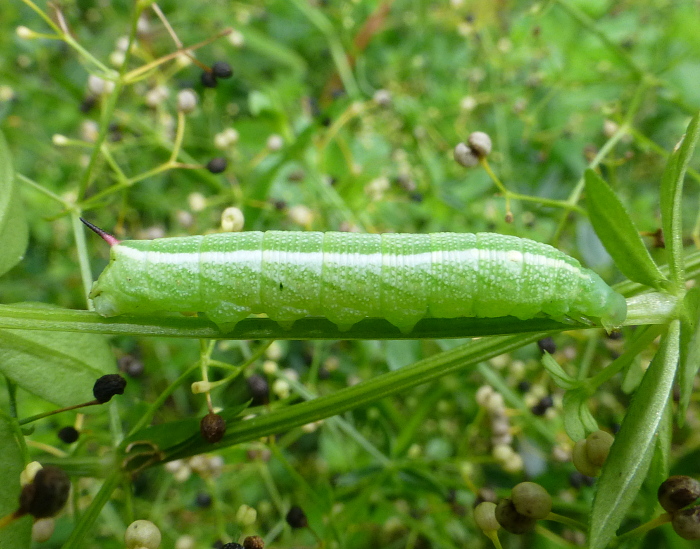
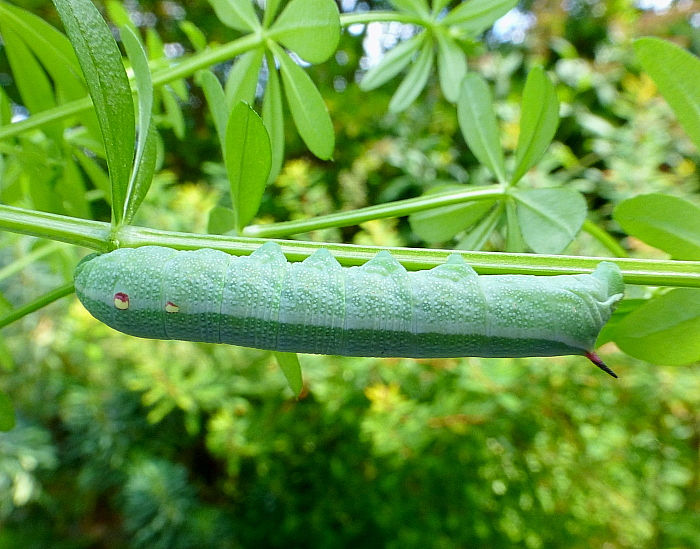
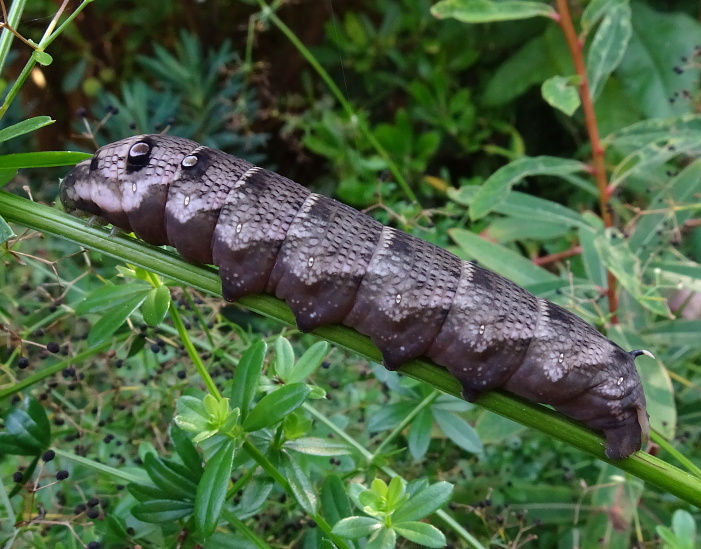
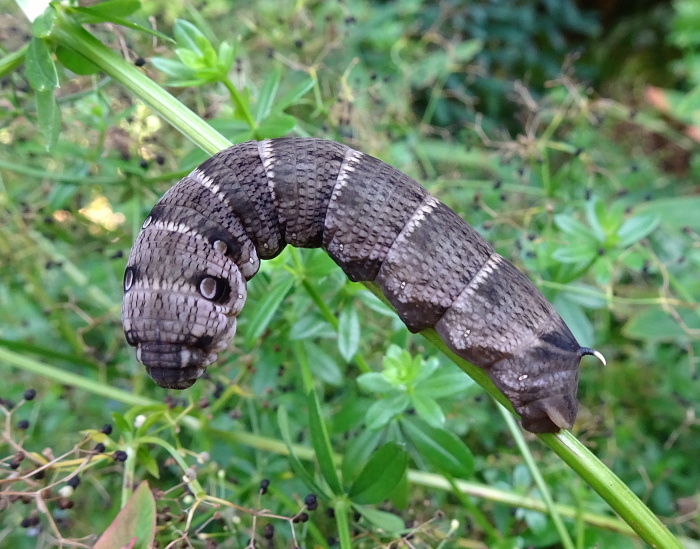
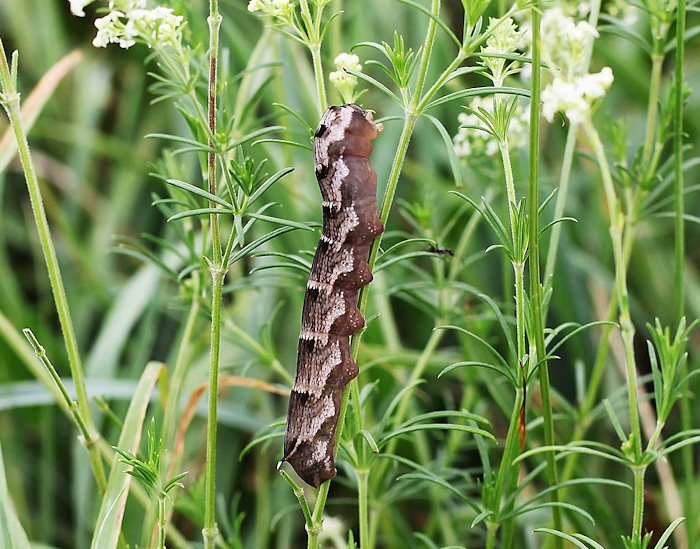
PUPA:
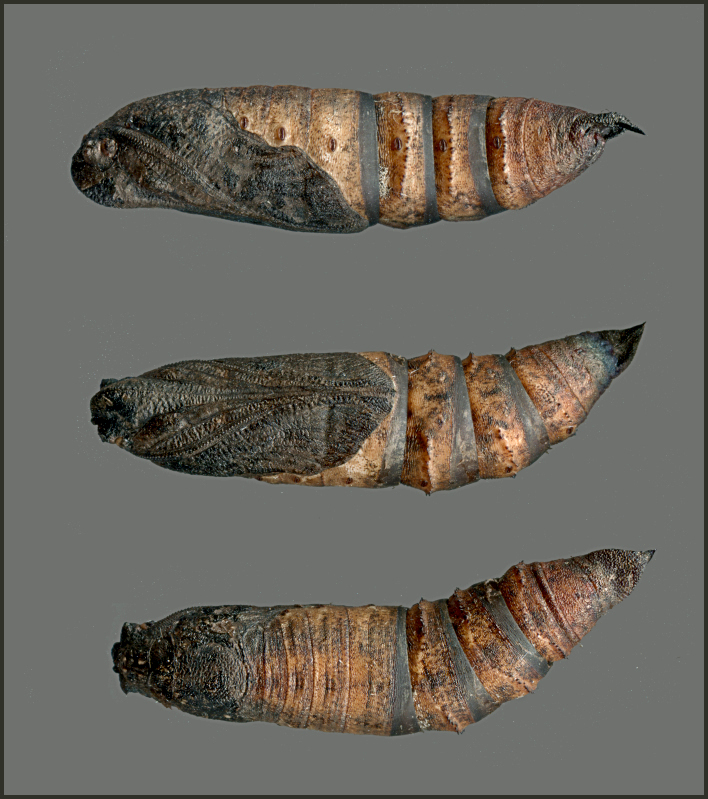
Larval hostplants. Vitis amurensis in the Russian Far East (Izerskiy, 1999b; Streltzov, Osipov & Malikova, 2003), but also found on various species of Epilobium and Galium verum (Nozaki & Miyata, 1990) in Japan.
China: Nei Mongol (Chen Barag Qi; Hulunbuir Region, Sanhaodian); Heilongjiang (??Ertzendziandzy; Harbin; Zhaodong); Jilin (Jiaohe, Lafa Shan); Liaoning (Changhai, Dachangshan Island); Hebei; Beijing (Baihua Shan; Beijing Botanical Garden).
North Korea: South Hamgyong Province (Seokwang Temple); South Pyongan Province (Pyongyang); North Hamgyong Province (Gyungsung; Charyung).
South Korea: Kyonggi Province (Suwon; Suri-san; Gwangleung; Soyo-san; Cheongpyong; Baekun-san; Asan Bay; Ansan; Pyungtaek; Yeoncheon); Kwangwon Province (Seolak-san; Yangyang; Donghae; Chuncheon); North Chungchang Province (Chupungryung; Minjuji-san; Songni-san); Kyongsang Province (Sobaek-san; Juwang-san); South Kyongsang Province (Jinyang); Cheju Province (Cheju-do; Halla-san; Seoguipo).
Japan: Hokkaido (Hakodate; Tobetsu; Sapporo; Koshimizu; Ozora; Nemuro); Honshu (Tokei-ji; Hakoni; Kobe; Shinano; Shizugawa; Fujimi Heights; Miyota; Yasakamura; Nagano); Kyushu (Kumamoto; Oita).
Russia: Transbaikalia (Nizhniy Casuchey; Budymkan; Ur'upino); Amurskaya (Blagoveshchensk; Zeiskii Nature Reserve; Uril area; Pashkovo; Isa); Yevreyskaya (Pompeyevka; Bastak); Khabarovskiy Krai (Slavyanka; Kabarovsk; Bolshekhekhtsyrskii Nature Reserve, Khabarovsk suburbs; Pivan; Botchinskii Nature Reserve; Bureinsky Nature Reserve); Primorskiy Krai (Andreevka; Primorskiy; Ussuriysk; Narva; Askold Island; Vityaz Bay; Kedrovaya Pad Nature Reserve; near Kalinovka; near Zanadvorovka; Kravtsovka; Dalnegorsk); Kurile Islands (Kunashir Island).
According to V. Dubatolov (pers. comm. 2010), not rare in the east of Transbaikalia.
Confined to the southern Russian Far East, Kurile Islands, northeastern China, the Korean Peninsula, and Japan as far south as Kyushu (Nozaki & Miyata, 1990).
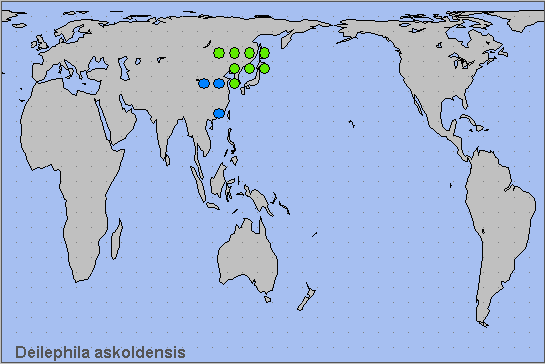
 Return to Sphingidae of the Eastern Palaearctic species list
Return to Sphingidae of the Eastern Palaearctic species list